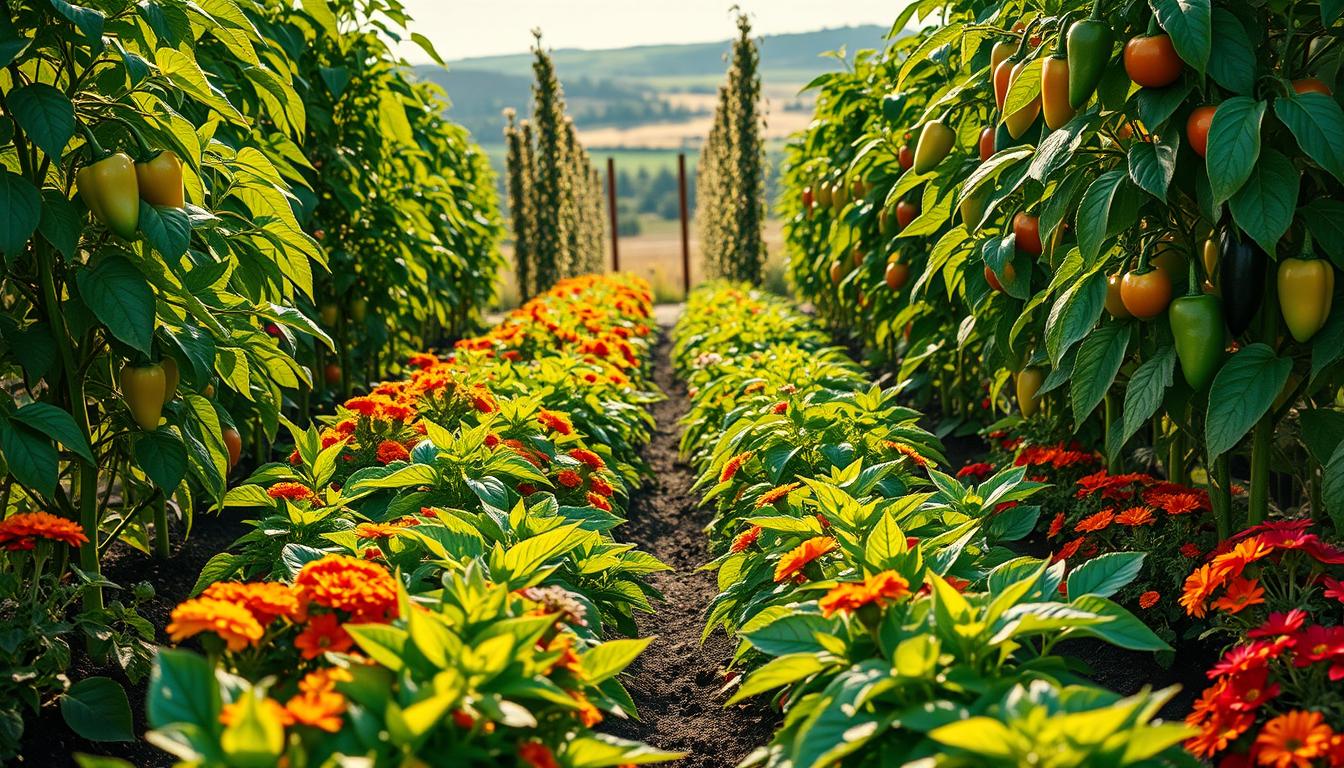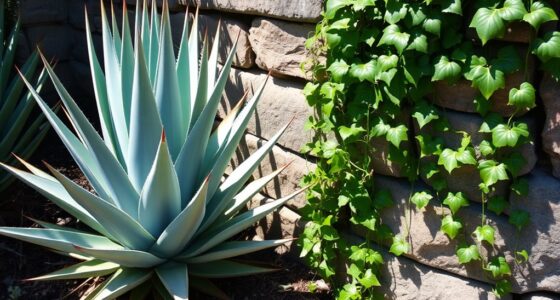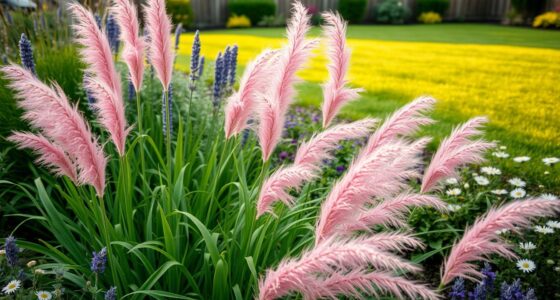Have you ever stood in your garden, admiring your thriving pepper plants, only to notice they aren’t reaching their full potential? Perhaps this is your first attempt at growing peppers, or you’re an experienced gardener looking to enhance your harvest. Whatever your experience level, understanding the significance of companion plants can profoundly impact your gardening journey. Imagine fresh, flavorful peppers, surrounded by vibrant greenery, all working together in perfect harmony. With the right companions, you can create a flourishing ecosystem that not only improves the health of your peppers but also keeps common pests at bay. In this pepper companion planting guide, we will explore some of the best companion plants for peppers, ensuring you reap the rewards of a bountiful garden.
Key Takeaways
- Choosing the right companion plants can enhance pepper growth and flavor.
- Companion planting helps with pest control, creating a healthier garden.
- Certain herbs, flowers, and vegetables work synergistically with peppers.
- Understanding plant relationships can lead to more productive harvests.
- Using companion plants can boost soil health and structure.
- Seasonal strategies can maximize the benefits of companion planting.
What Are Companion Plants?
Understanding the concept of companion planting can significantly benefit your gardening experience. Companion plants are those that thrive together, fostering a natural partnership that enhances growth and protects against pests. In essence, this gardening technique involves strategically placing plants that complement each other, maximizing the overall health of the garden.
Understanding Companion Planting
Companion planting involves selecting specific plants that grow well with peppers to create a supportive ecosystem. These plant partnerships can encourage the flourishing of beneficial insects and deter harmful pests. Knowledge of how various species interact allows you to cultivate a garden that thrives without relying heavily on synthetic chemicals.
Benefits for Your Pepper Plants
The benefits of companion planting for your pepper plants are numerous. These include improved nutrient availability, enhanced growth rates, and increased resistance to diseases. You might find that certain companions help maximize space, allowing your peppers to produce more fruit. By enhancing soil health and promoting diversity, companion planting creates a flourishing environment, making your pepper plants stronger and more resilient.

Why Peppers Need Companions
Companion planting plays an essential role in nurturing pepper plants, significantly enhancing their growth and flavor. By strategically selecting companion plants, you create a supportive ecosystem that not only boosts the plants’ overall health but also enriches the taste of the peppers.
Enhancing Growth and Flavor
By enriching the soil and providing shade, companion plants can lead to a noticeable difference in the growth patterns of peppers. Plants such as basil and marigolds, when grown alongside your pepper plants, contribute to enhancing growth of peppers. They can attract beneficial insects that promote pollination, thereby resulting in bigger and tastier yields. With the right companions, you can transform your pepper garden into a flourishing paradise.
Pest Control through Partnerships
Effective pest control for peppers begins with the right companion planting. Certain plants have the ability to repel common pests, reducing the need for synthetic pesticides. Utilizing organic pest control for peppers not only helps protect your plants but also changes the dynamics of your garden to promote biodiversity. With partnerships formed through companion planting, your pepper plants benefit from enhanced defense mechanisms against harmful insects.

Best Companion Plants for Bell Peppers
Choosing the right plants to accompany your bell peppers can significantly enhance your gardening experience. The best companion plants for bell peppers include herbs and flowers that not only promote growth but also offer natural pest control and enhance flavor. Here are some excellent options for you to consider.
Basil: The Perfect Herb Partner
Basil companion planting is an excellent choice for bell peppers due to its unique ability to improve flavor. In addition to enhancing taste, basil serves as a deterrent for common pests like aphids and spider mites. By introducing basil into your garden, you can enjoy both fresh herbs and the benefits of increased plant health.
Marigolds: Natural Pest Deterrents
When thinking about marigolds pest control, these vibrant flowers stand out for their ability to attract beneficial insects while repelling harmful ones. Planting marigolds near your bell peppers can create a more balanced ecosystem in your garden. The inclusion of marigolds will not only beautify your space but also safeguard your peppers from potential pests.
Onions: A Flavorful Ally
Onions make for a perfect companion due to their strong scent, which helps ward off pests like slugs and cabbage worms. They thrive alongside bell peppers without competing for essential nutrients. The combination of onions and peppers in your garden can lead to a healthier and more bountiful harvest.

| Companion Plant | Benefits | Pest Control |
|---|---|---|
| Basil | Enhances flavor | Repels aphids and spider mites |
| Marigolds | Attracts beneficial insects | Deters harmful pests |
| Onions | Provides flavor | Wards off slugs and cabbage worms |
Ideal Companions for Hot Peppers
When it comes to enhancing your hot pepper garden, selecting the right companion plants can make a significant difference. Some of the ideal companions for hot peppers include nasturtiums, borage, and garlic. Each of these plants contributes unique benefits that support the health and productivity of your peppers.
Nasturtiums: Edible Flowers with Benefits
Nasturtiums are not just visually appealing; they provide practical benefits as well. These vibrant flowers attract aphids and other pests away from your hot peppers, allowing them to thrive without the burden of invasive insect populations. The nasturtiums benefits extend beyond pest control, as you can also enjoy their edible blooms in salads or as garnish.
Borage: A Pollinator Magnet
Borage stands out as an excellent choice for attracting pollinators like bees and butterflies. This plant not only adds beauty to your garden but also significantly boosts pollination rates, which can lead to a more abundant harvest of hot peppers. Planting borage helps create an inviting environment for borage pollinators, enhancing the overall health of your garden ecosystem.
Garlic: A Spicy Helper
Garlic is a well-known companion that brings multiple advantages to your hot pepper plants. This flavorful herb possesses strong pest-repelling qualities, acting as a protective barrier against various garden invaders. Garlic’s growth does not compete for nutrients, making it a compatible addition to your hot pepper patch.
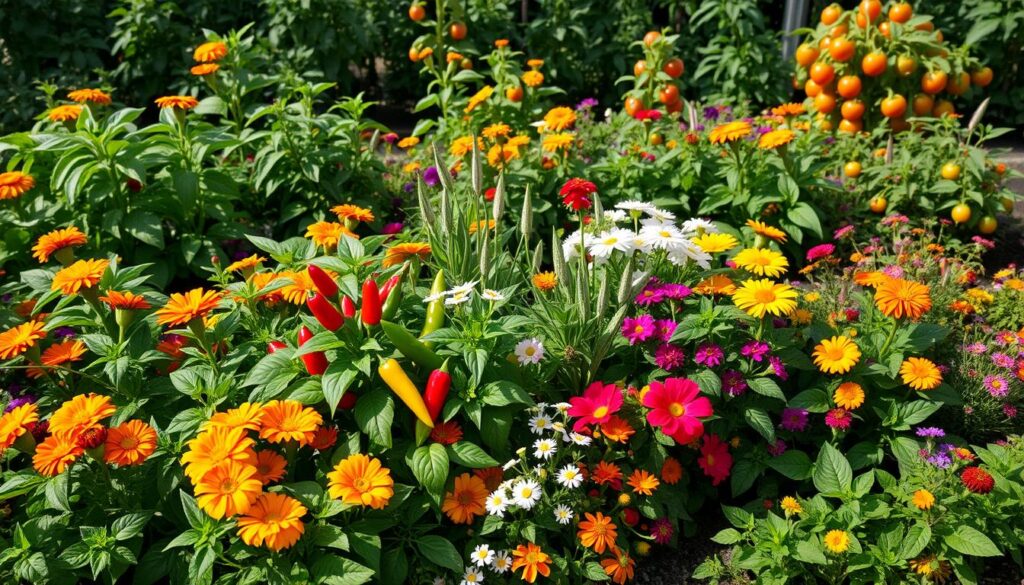
Companion Plants to Avoid
While enjoying the many benefits of companion planting, it’s essential to know which plants to avoid with peppers. Certain plants can negatively affect the growth and health of your pepper plants. By recognizing the incompatible plants for peppers, you can create a thriving garden that supports your peppers effectively.
Plants That Compete with Peppers
Competition for resources is a significant factor when planning your garden. The following plants tend to compete with peppers, making them unsuitable companions:
- Fennel
- Brassicas (such as cabbage and broccoli)
- Beans
- Sunflowers
- Potatoes
Incompatible Neighbors to Watch Out For
In addition to competitors, certain plants can introduce pests or diseases that harm your pepper plants. Here are some incompatible plants for peppers that you should be cautious about:
- Carrots
- Chili peppers
- Wormwood
Keeping these plants to avoid with peppers in mind will help you cultivate a healthier and more productive garden.
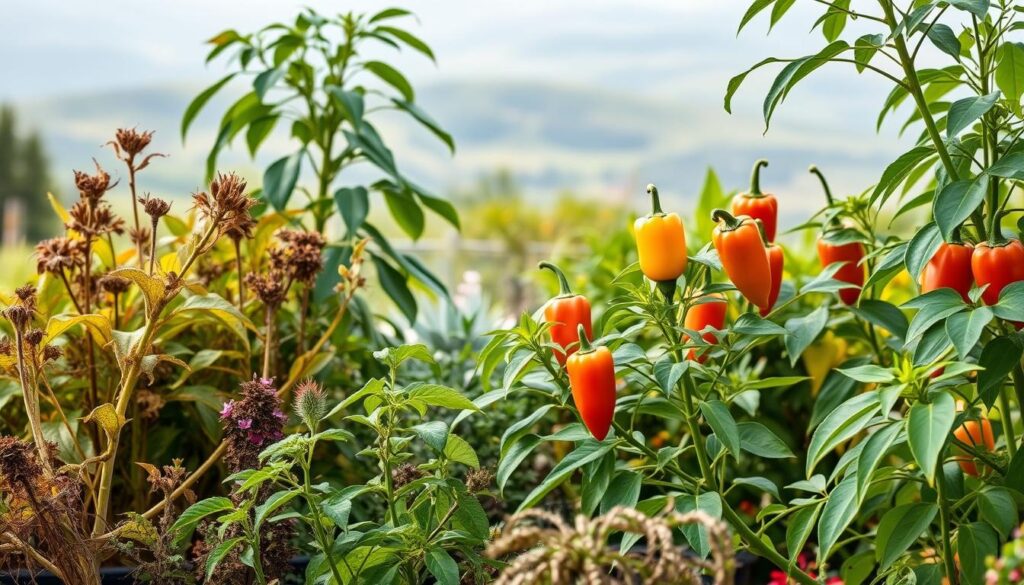
How to Plant Companions with Peppers
Successfully planting companions with peppers involves thoughtful planning around both spacing and timing. Proper arrangement ensures that each plant gets enough sunlight and nutrients, while planting at the right moment enables them to thrive together, boosting productivity in your garden.
Spacing and Arrangement Tips
When considering spacing tips for companion planting, it’s essential to allow for adequate room between each plant. This avoids overcrowding, which can lead to competition for resources. A good rule of thumb is:
- Bell peppers should be spaced 18 to 24 inches apart.
- Hot peppers require slightly more room, approximately 24 to 30 inches apart.
- Herbs like basil can be planted about 12 inches away from your pepper plants.
Arranging your companions around peppers enhances airflow, reduces the risk of disease, and maximizes sunlight exposure, fostering a healthier garden ecosystem.
Timing Your Planting for Success
Timing plays a crucial role in effective planting companions with peppers. Each plant has its own optimal growing conditions. To ensure a flourishing garden:
- Start your pepper seeds indoors 8 to 10 weeks before the last frost.
- Transplant seedlings outdoors once the soil temperature reaches at least 70°F.
- Consider the growth rates of your companions; plant slower-growing plants alongside faster ones to maintain harmony.
By synchronizing your planting efforts, you can help all your plants reach their full potential and create a vibrant garden.

Maintenance Tips for Companion Gardens
Successful companion garden maintenance involves consistent attention to both watering and fertilization. Peppers thrive when they receive adequate moisture, and the right companion plants can contribute by helping to retain that moisture in the soil. Understanding the specific watering needs of peppers and their companions is crucial for promoting a flourishing garden.
Watering Considerations
When watering peppers and companions, aim for a deep soak rather than frequent light watering. This encourages root growth and ensures that moisture reaches deeper into the soil. Keep in mind the following tips:
- Check soil moisture regularly to prevent over or under-watering.
- Water early in the morning to reduce evaporation.
- Use mulch around your plants to retain moisture and regulate soil temperature.
Fertilization for Companions
Effective fertilization for companion plants significantly enhances growth and productivity. Different plants have varying nutrient needs, so consider the following guidelines:
- Choose a balanced fertilizer to support overall garden health.
- Pay attention to the specific requirements of both peppers and companion plants.
- Apply fertilizer after planting and during the growing season to maximize yields.
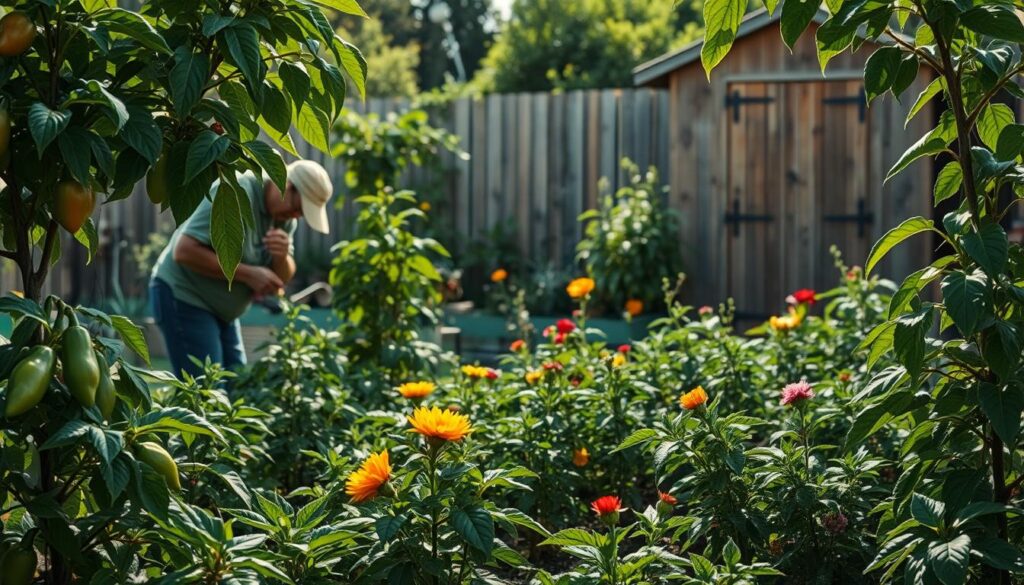
Observing and Adjusting Your Companion Mix
Creating a successful companion garden involves continual observation and the willingness to adapt your approach. By taking note of how different plants interact, you can identify successful companionship signs and enhance your garden’s productivity. Regularly assessing the health and growth of your plants ensures that they are thriving together, creating an optimal environment for each other.
Signs of Successful Companionship
Look out for these indicators to assess the health of your companion mix:
- Vibrant growth: Plants should show healthy foliage and robust development.
- Minimal pest activity: Fewer pests indicate that your companions are effectively deterring unwanted insects.
- Compatibility: Your plants should coexist without significant competition for resources.
- Healthy root systems: Strong roots promote stability and nutrient uptake.
When to Change Your Companion Plants
If you notice that certain plants are underperforming or exhibiting signs of stress, it may be time for adjusting your companion plant mix. Consider making changes if:
- Your plants show stunted growth.
- There is a noticeable increase in pest problems.
- Soil health declines as indicated by reduced nutrient levels.
- Specific companions are outcompeting others for sunlight, water, or nutrients.
Making informed adjustments enhances the synergy in your garden, ensuring that your peppers and their companions flourish together.

Seasonal Considerations for Companion Planting
Implementing seasonal companion planting can significantly boost the productivity of your garden. By tailoring your strategies based on the time of year, you can optimize results for your peppers. Understanding the seasonal rhythms helps you adapt to their needs, promoting growth and resilience.
Spring Planting Strategies
Spring offers a wonderful opportunity to incorporate fast-growing companions into your garden. These early bloomers provide shade, suppress weeds, and attract beneficial insects. Consider planting basil, which complements the flavor of peppers and helps deter pests. Marigolds act as effective natural pest deterrents, enhancing your crop’s overall health. Utilizing these spring strategies for peppers can lead to a thriving garden throughout the warmer months.
Fall Companion Plant Tidying Up
As summer transitions to fall, it becomes vital to assess your garden. Implementing fall gardening tips, such as removing unproductive companions, helps prepare your soil for the next planting cycle. Clearing space allows for better air circulation and sunlight exposure, which are crucial for the remaining plants. Late-season companions, like kale or winter herbs, can still flourish and ensure you have a harvest well into the cooler months.
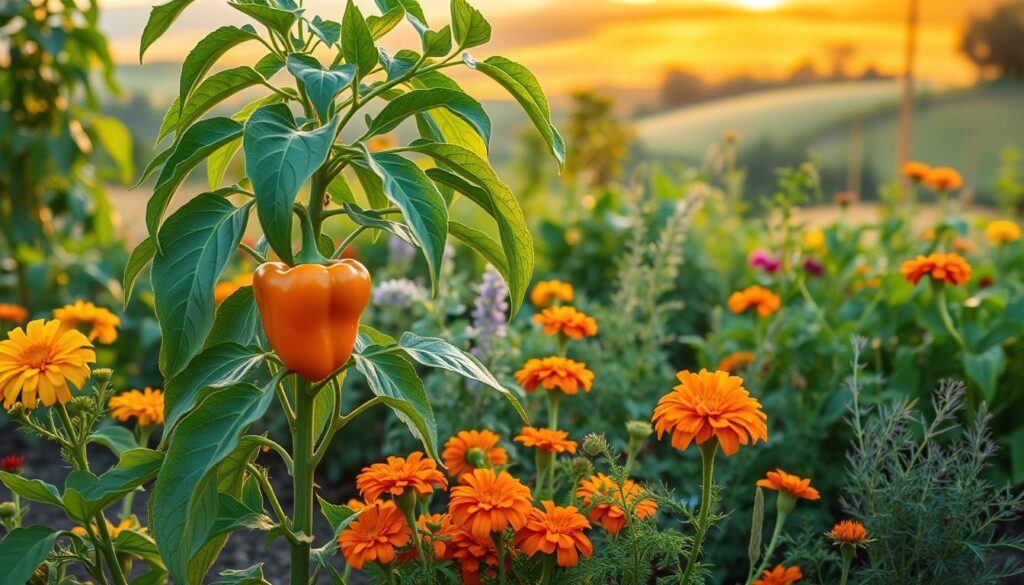
How Companion Planting Affects Soil Health
Engaging in companion planting carries significant benefits for soil health. By selecting the right pairings of plants, you can foster an environment that promotes nutrient exchange and improves the overall quality of the soil. This holistic approach caters not just to your pepper plants but enhances the entire garden ecosystem.
Nutrient-Giving Partnerships
Companion plants can work in harmony to enrich the soil with essential nutrients. For example:
- Basil, when paired with peppers, releases oils that enhance flavor while aiding in nutrient absorption.
- Legumes like beans fix nitrogen in the soil, improving nutrient availability for your peppers.
- Marigolds contribute to pest control; as they thrive, they nurture the soil and help stabilize its quality.
Such nutrient-giving partnerships paint a vivid picture of how companion planting can boost soil health and ensure your peppers flourish.
Improving Soil Structure Naturally
Beyond nutrients, certain companions improve soil structure, enhancing aeration and drainage. When you incorporate plants with deep roots, such as:
- Dandelions, which break up compacted soil.
- Rudbeckia, known for its vigorous root system.
- Thyme, which prevents soil erosion with its mat-forming growth.
These plants support not only the water retention in the soil but also provide a healthier habitat for your pepper plants. Through soil health and companion planting, you create a thriving space for improving soil for peppers, resulting in stronger, more robust plants.
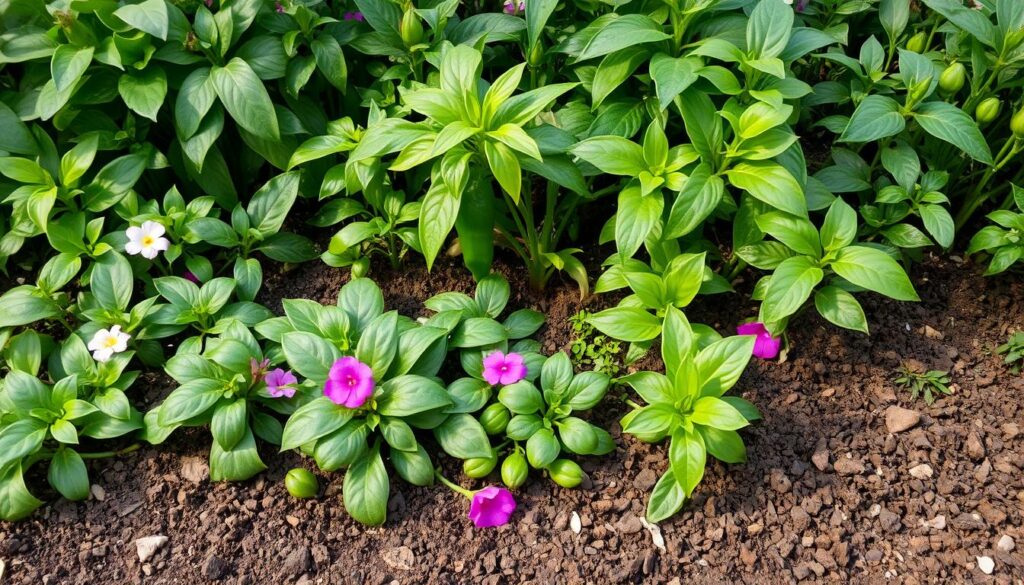
The Role of Companions in Attracting Pollinators
When you focus on attracting pollinators to peppers, consider incorporating a variety of flowering plants into your garden. These companions not only draw in vital bees and butterflies but also create a lush and inviting ecosystem. The interaction between your pepper plants and their companion flowers can lead to increased fruit set and better yields. Underlying this practice is a core principle: biodiversity in companion planting fosters a vibrant and resilient garden.
Flowering Plants for Bees and Butterflies
Choosing flowering plants that appeal to pollinators can make a significant difference in your pepper garden. Popular options include:
- Sunflowers: Tall and bright, these flowers attract a range of pollinators.
- Lavender: The aromatic blooms draw in bees, enhancing pepper pollination.
- Echinacea: Also known as coneflowers, these are known to attract butterflies.
The Importance of Biodiversity
Integrating a diverse range of companion plants not only attracts pollinators but also mitigates pest pressures and disease risks. A biodiverse garden makes it harder for pests to thrive, as natural predators are attracted to the variety of plant life. By embracing biodiversity in companion planting, you partner with nature to nurture a balanced and thriving garden ecosystem.
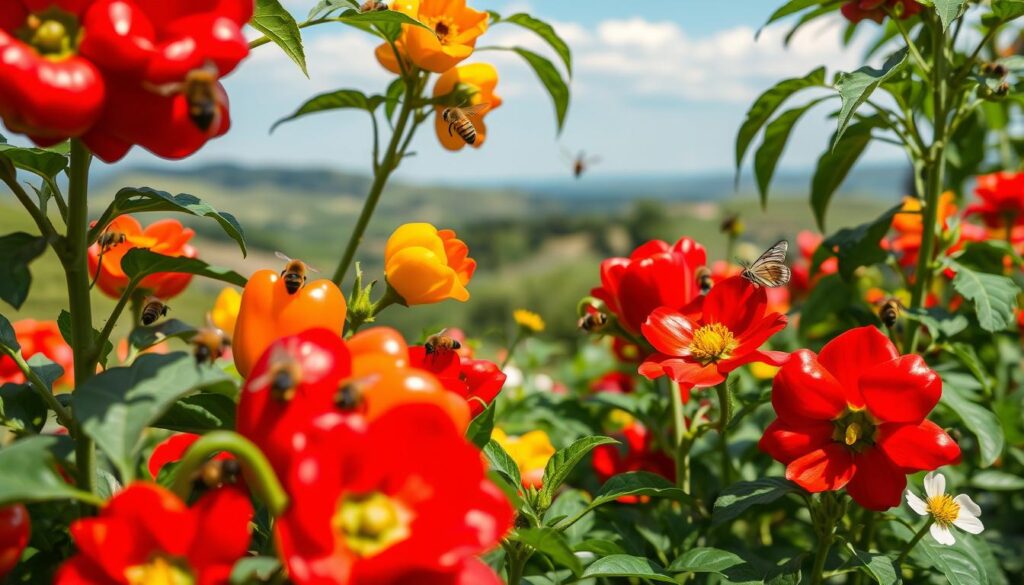
Troubleshooting Common Issues
In your quest for a thriving pepper garden, staying vigilant against pests and diseases is essential. By understanding common challenges, you can effectively address troubleshooting pepper gardening issues as they arise. This proactive approach not only saves your pepper plants but also safeguards the health of their companion plants.
Dealing with Pests and Diseases
Pests like aphids, spider mites, and whiteflies can wreak havoc on both your peppers and companion plants. Regular monitoring can help you catch these invaders early. Consider using natural pest control methods such as introducing beneficial insects or applying organic insecticidal soap. Diseases in companion plants could manifest as yellowing leaves or stunted growth. Keep an eye on these symptoms to intervene promptly and protect your garden’s ecosystem.
Knowing When to Seek Help
Some issues might be beyond your control. If you notice severe outbreaks of pests or persistent diseases, it may be time to consult with a local extension office or a professional horticulturist. Their expertise can provide valuable insights tailored to your specific situation, preventing greater losses and ensuring your pepper plants flourish.
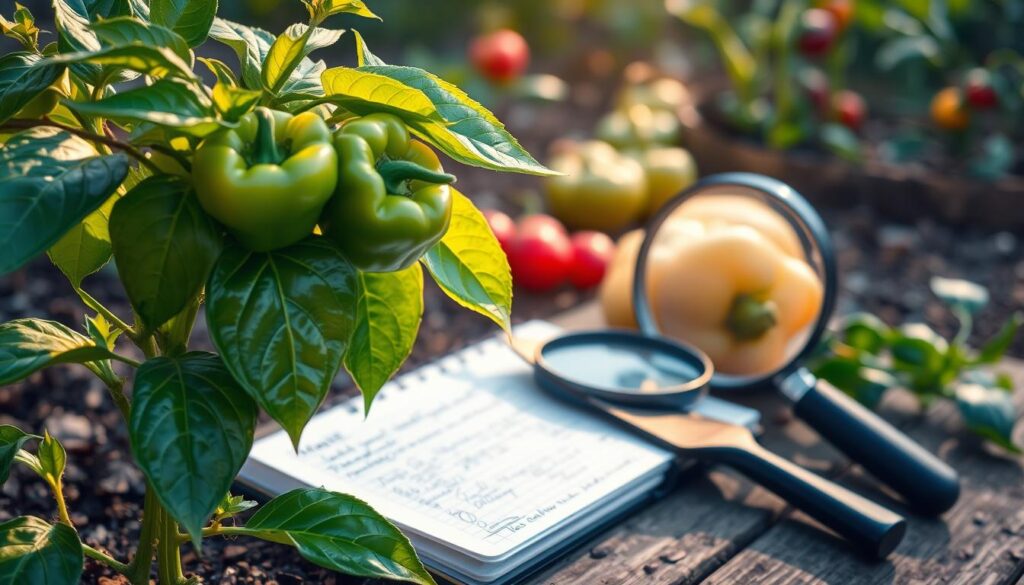
Harvesting Peppers and Their Companions
Knowing the right time to harvest your peppers can lead to the best flavor and yield. The process of harvesting peppers and companions can be both rewarding and enjoyable. As you pick your peppers, consider how you can incorporate companion plants into your culinary experiences. This adds variety and enhances your dishes significantly.
When and How to Harvest
Harvesting peppers is best done when they reach their mature color. For example, bell peppers transition from green to red, yellow, or orange depending on the variety. Use sharp scissors or pruning shears to cut the peppers from the plant to minimize damage. Companions like basil and cilantro can be harvested at any time, allowing you to enjoy fresh herbs alongside your peppers throughout the growing season.
Ideas for Using Companion Plants in Your Cooking
Integrating companion plants into your cooking can elevate your meal preparation. Consider these ideas:
- Fresh salsa: Combine harvested peppers with chopped onions, cilantro, and tomatoes for a refreshing salsa.
- Pasta dishes: Use peppers and basil in a light pasta or pesto for vibrant flavors.
- Stuffed peppers: Fill peppers with a mixture of rice, black beans, and corn for a hearty meal, garnished with fresh cilantro.
Using companion plants in cooking not only enhances flavor but also encourages health benefits by adding a variety of nutrients to your diet. Enjoy the fruits of your labor as you create delicious dishes with your homegrown peppers and companions.
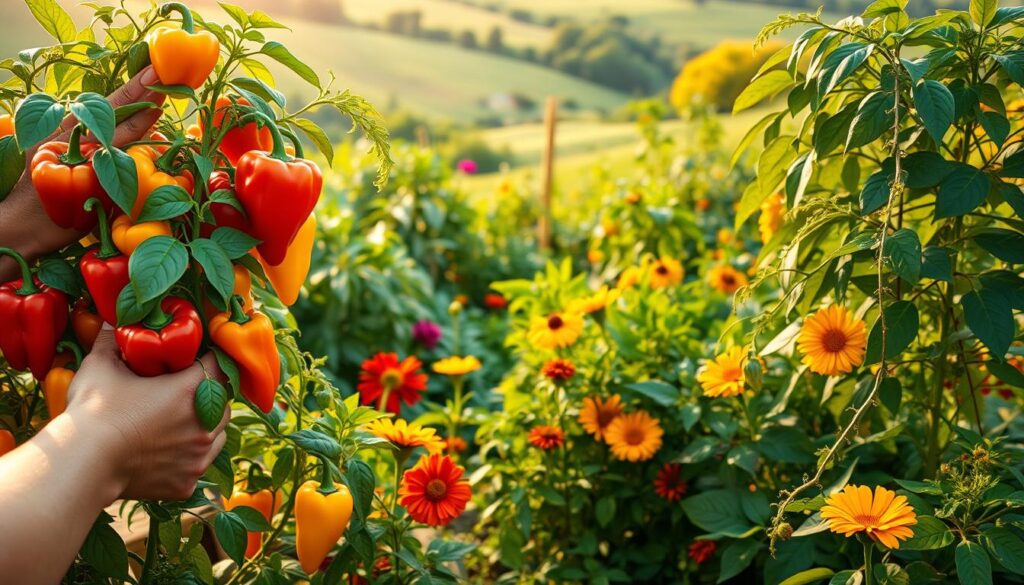
Companion Planting Myths Debunked
Many gardeners fall prey to the myths about companion planting, leading to confusion and missteps in their gardening efforts. Understanding plant interactions and separating fact from fiction ensures a more productive garden. By clearing up these misconceptions in companion gardening, you can make informed choices that enhance your plants’ health and growth potential.
Separating Fact from Fiction
One common myth suggests that planting certain species together will guarantee enhanced growth. While some pairings are beneficial, not every combination leads to miraculous results. It’s essential to research and understand the specific needs of each plant. Another widespread belief is that companion plants repel all pests. This is inaccurate; while some plants may deter specific insects, they won’t provide a blanket solution against every garden pest.
Common Misconceptions About Companions
- Companion planting always leads to improved flavor: The flavor enhancement is not universal and depends on various factors, including growing conditions.
- All flowers will attract beneficial insects: Not all flowering plants serve as a magnet for pollinators, so select wisely based on your garden’s specific needs.
- More plants means less competition: Overcrowding can lead to competition for nutrients and water, adversely affecting growth.
| Myth | Truth |
|---|---|
| Planting any two plants together will help them grow. | Specific pairings work best based on individual plant needs. |
| Companion plants eliminate pests entirely. | Some plants may deter certain pests but not all of them. |
| All flowering plants attract beneficial insects. | Choose specific flowers known for attracting desired pollinators. |

Resources for Further Companion Planting Knowledge
Accessing various resources can significantly enhance your understanding of companion planting. Numerous gardening books for peppers offer invaluable insights into planting techniques and advantageous pairings. Websites dedicated to gardening also serve as excellent sources for maintaining your companion plant garden. Engaging with community gardening groups provides you with hands-on experiences, enabling you to learn from fellow gardening enthusiasts. This collaborative environment fosters an enriched journey and skillset.
Recommended Books and Websites
- The Companion Planting Guide by Anne K. McFadden – A comprehensive book that goes into detail about ideal companion plants for various vegetables.
- Vegetable Gardening for Dummies by The National Gardening Association – This offers easy-to-explore sections on companion planting.
- Gardening websites like Growing Produce and The Old Farmer’s Almanac provide articles and forums where you can ask questions and gather insights.
Community Gardening Groups to Join
- Local community gardening groups – These often have events that let you connect with experienced gardeners.
- Social media gardening groups – Online platforms provide virtual support and resources for your gardening journey.
- Master Gardener programs – Consider joining a local program to access expert advice and training.
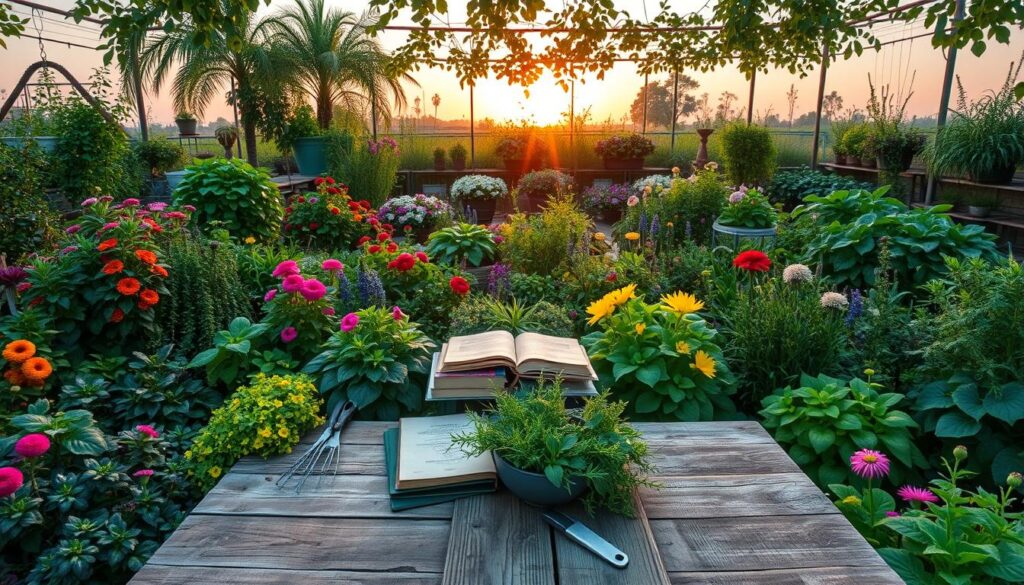
Your Companion Planting Checklist
Embarking on your companion planting journey can be both exciting and rewarding. To streamline the process and ensure your pepper garden thrives, creating a companion planting checklist is essential. By organizing your tasks and tools, you can focus on what truly matters: fostering healthy, productive plants. With the right tools for successful gardening, you will enhance your gardening experience and make informed decisions along the way.
Essential Tools for Success
Consider investing in garden planning apps, which can help you visualize and plan your layout effectively. Soil meters are another handy tool that allows you to assess your soil conditions, ensuring that your peppers and their companions are getting the nutrients they need. Additionally, a pest identification guide can be invaluable in quickly identifying and managing any issues that arise. These essential tools will contribute to your comprehensive companion planting checklist, turning your vision into a thriving reality.
Creating Your Personalized Companion Plan
Crafting a personalized companion planting plan enables you to maximize yield and growth potential in your garden. Start by researching which companion plants work best with your chosen pepper varieties. Then, consider seasonal changes and the unique conditions of your garden space. Throughout the season, be prepared to adjust your plan based on what you observe. With your companion planting checklist in hand, you’re not only enhancing the health and balance of your pepper garden but also enjoying a fruitful gardening experience.
